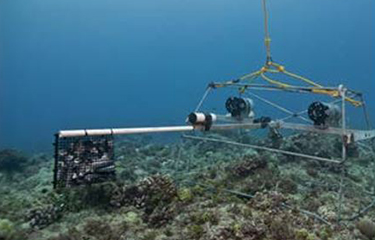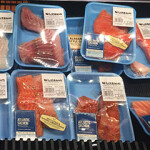Underwater video systems deployed in Mediterranean to study MPA impacts

The Prince Albert II of Monaco Foundation, Community Jameel, Monégasque Association for the Protection of Nature (AMPN), and Blue Abacus announced a partnership on 23 January, 2023, to work together to deploy baited remote underwater video systems (BRUVS) for marine research.
BRUVS was developed by Blue Abacus in 2020, and co-founded by University of Western Australia Professor Jessica Meewig, as a way to film and analyze fish populations and other marine species. The one-year project will conduct two surveys to aid Monaco’s conservation and marine resilience efforts against climate change.
“The camera systems are a frame with two video cameras set in a base bar so we collect stereo footage. We deploy them in a longline configuration with 200 meters of surface line between each dangling rig – five rigs per set – 800 meters total length. They drift for two hours and then are retrieved. All systems are baited with oily bloody mashed fish (typically sardines),” Meewig said. “Each video sample is processed by image analysts using facilitating software. All observed animals are identified to species or the lowest taxonomic resolution possible. Abundance is estimated for each taxon as the maximum number of individuals in a given video frame to avoid repeat counts of individuals if they swim in and out. Because the systems are stereo, we also measure fork length and these lengths can then be converted into weight by published length weight relationships.”
Community Jameel was launched in 2003 to address pressing human challenges in areas such as climate change, health, and education. Community Jameel Associate Director Uzma Sulaiman said the data collected by the project will help build a better understanding of climate change's impact on marine life.
“Despite the oceans taking up 70 percent of the planet and accounting for half the oxygen we breathe, the ocean remains a mystery. This lack of information might account for why discourse on the ocean has not featured prominently in conversations around climate change,” Sulaiman said. “Data can help change this by allowing fisheries to understand current marine life and provide accurate indicators of damage. It can also build a reliable database of marine life across the globe and provide further insight into the importance of the ocean to our environment as well as how we can protect and rebuild it.”
The AMPN was founded as a non-governmental organization in 1975 and created the first marine protected area (MPA) in Monaco in 1976, called the Larvotto MPA. It also helped create Monaco's Spélugues MPA in 1986. According to the AMPN Director Jacqueline Gautier-Debernardi, the BRUVS will be deployed inside and outside the limits of the Larvotto MPA. Gautier-Debernardi said he believes the project's data will ...
Photo courtesy of NOAA




Share